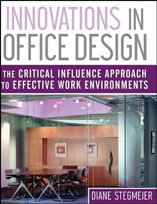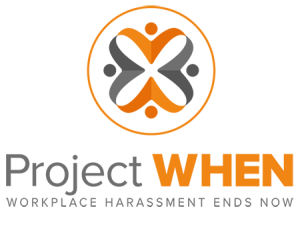Critical Influence™: Rewards and Consequences
Aligning rewards and consequences with organizational goals during workplace change
 Closely related to the concept of creating a compensation plan tailored to what is expected from employees, an organization’s rewards and consequences should also match the enterprise’s hopes and expectations for its employees.
Closely related to the concept of creating a compensation plan tailored to what is expected from employees, an organization’s rewards and consequences should also match the enterprise’s hopes and expectations for its employees.
Imagine a company that published a job posting clearly emphasizing the need for a candidate who is a risk taker, someone who can keep up with the team’s innovative way of thinking and working. You, as a professional who has had several noteworthy experiences of taking risks in making corporate decisions, decided to apply for the job, thinking that the company surely understands that mistakes are inevitable when taking risks.
After securing the position and learning how things work in the company, you observe a system that rewards individuals who stick to proven or traditional methods and bring results with minimal to no mistakes. This is obviously a far cry from what you signed up for. You start to wonder how true this company is to their words or if it is even worth sharing your creatively divergent ideas.
A mismatch between the company’s goals and how employees are rewarded can easily lead to a culture of mistrust and reluctance to collaborate among team members. This incongruence often roots from leadership taking the power of rewards and consequences for granted.

As part of the 15 Critical Influences™, this page on Rewards and Consequences is integrated with actual content from the book Innovations in Office Design: The Critical Influence Approach to Effective Work Environments™ by SCG Founder Diane Stegmeier.
How an appropriate rewards system can guide you through a workplace change
There is no stressing enough how important it is for leaders to leverage their rewards system to bring truly great results, especially when managing a workplace change initiative. When it comes to introducing significant workplace changes to employees, rewards can serve as a positive driving force for the ideal utilization of new spaces. Moreover, consequences can highlight what behaviors are considered inappropriate in a new work setting.
For instance, rewards and consequences are used in the correct manner when rewarding an employee for embracing a new work space, and providing consequences for those who do not comply with new workplace protocols.
On the other hand, misguided consequences (such as playful reprimanding of an employee “taking a break” in a focus room) inject confusion into the work environment and discourage full utilization of the new office layout. In this sense, management needs to be clear on the consequences being enforced in the workplace. In fact, leadership should model the expected behavior from employees in a new office environment.
On the theory of rewarding A while hoping for B
When organizations claim a commitment to companywide teamwork, yet continue to reward employees as individuals using outdated practices, it’s easy to make correlation to Steven Kerr’s classic theory, “On the Folly of Rewarding A while hoping for B” which was first published in 1975 reprinted in 1995.
Twenty years after this theory was first published, the Academy of Management Executive polled its executive advisory panel to determine the progress made in corporate America in addressing the theory.
What was true more than four decades ago and when Innovations in Office Design was written remains so today, “Managers still cling to quantifiable standards when they reward others and as their primary explanation for the folly’s perniciousness.”
Moreover, ninety percent of the respondents to the said poll reported that their organizations were indeed struggling in a number of critical areas. Three major themes surfaced:
- Difficulty breaking old paradigms of approaching reward and recognition. Specifically, defining the desired workforce behaviors and developing goals to motivate the appropriate employee performance. These new targets should include non-quantifiable behavior; and rather than emphasizing the employee’s job or function in the organization, the rewards should be more holistic and dependent on the overall performance of the system. Respondents identified barriers to changing old mentalities, including employee belief in entitlement to the rewards, and management resistance to redesigning existing performance management practices.
- Short-term mentality of both the organization’s management and its shareholders. The emphasis on performance in the short term, without concomitant attention to long-term goals, can be detrimental to the overall health of the enterprise. When those at the highest levels of the organization appear focused entirely on short-term results, the chances of the workforce at large focusing on anything but the here and now are relatively slim.
- Inability of organizations to view performance results holistically, along with the specific elements to achieve the desired outcomes of the enterprise. The root cause of this situation is believed to be existing organizational structures. Typical business structures encourage functional, departmental, or business unit “silos” that motivate the maximum results for that particular group. In many cases, that individual performance optimization occurs at the expense of the overall enterprise.
Clearly, these barriers prevent organizations from achieving an innovative workplace culture. These issues could surely undermine organizational endeavors including the implementation of a new workplace strategy. Let’s explore this concept in more detail in the next section.
How rewards and consequences relate to other Critical Influences™
 As seen in the result of the poll, one prevalent issue is the outdated mentalities of both employees and management about corporate rewards.
As seen in the result of the poll, one prevalent issue is the outdated mentalities of both employees and management about corporate rewards.
The rewards system needs to be refined in a way that employees are appropriately motivated through performance management that includes non-quantifiable elements such as interaction and sharing of ideas with one another. Indeed, companies cannot hope for collaboration (A) while rewarding individual achievements (B).
Connected to this issue, the other barriers identified in the findings are an undercurrent of mistrust of management, an unwillingness to support the efforts of peers, and a general inability to recognize the importance of the long-term goals of the enterprise. With barriers such as these, it should come as no surprise that a new workplace strategy that encourages teamwork and collaboration has little chance of success.
The physical workplace cannot be expected by itself to eliminate deep-rooted hindrances, which need to be addressed holistically within the organization.
Oftentimes, the expectation of immediate behavioral change is imposed on the physical workplace solution. However, behavioral change takes time. No professional in the workplace field should promise instantaneous results, not when Critical Influences that negatively impact behavior are deeply embedded in the core of the organization’s operations.
This is why it is important to analyze existing factors within the organization when planning to implement a new workplace strategy. Administering pre-occupancy surveys and change readiness assessments can provide clarity about employee sentiments on the current work environment. The results of these polls can also shed light on potential areas of resistance and help management address it.
Furthermore, facilitating focus groups and key stakeholder interviews can help an organization gain insight of what’s working and what isn’t. These discussions can yield commentary on how the company handles change and may even bring some challenges to light, including how rewards and consequences are enforced in the workplace.
For instance, the findings from interviews conducted for the C-suite, management or leadership, may imply that they are quite satisfied with the rewards system implemented in past change projects. Results from the employees, on the other hand, may exhibit a huge difference. Employees may feel that the rewards system is ineffective and unfair.
By learning about this challenge early on in the project, change managers will be able to identify how to address it best. This can save everyone the trouble of dealing with a disorganized and messy implementation of a change initiative.
Take a holistic approach in setting rewards and consequences in your organization
Among other factors that you need to examine when thinking about introducing new ways to work in your organization, the rewards and consequences should be aligned with your goals and plans.
Do you need an expert’s perspective on your rewards system? Discuss it with us by filling out the form below.



